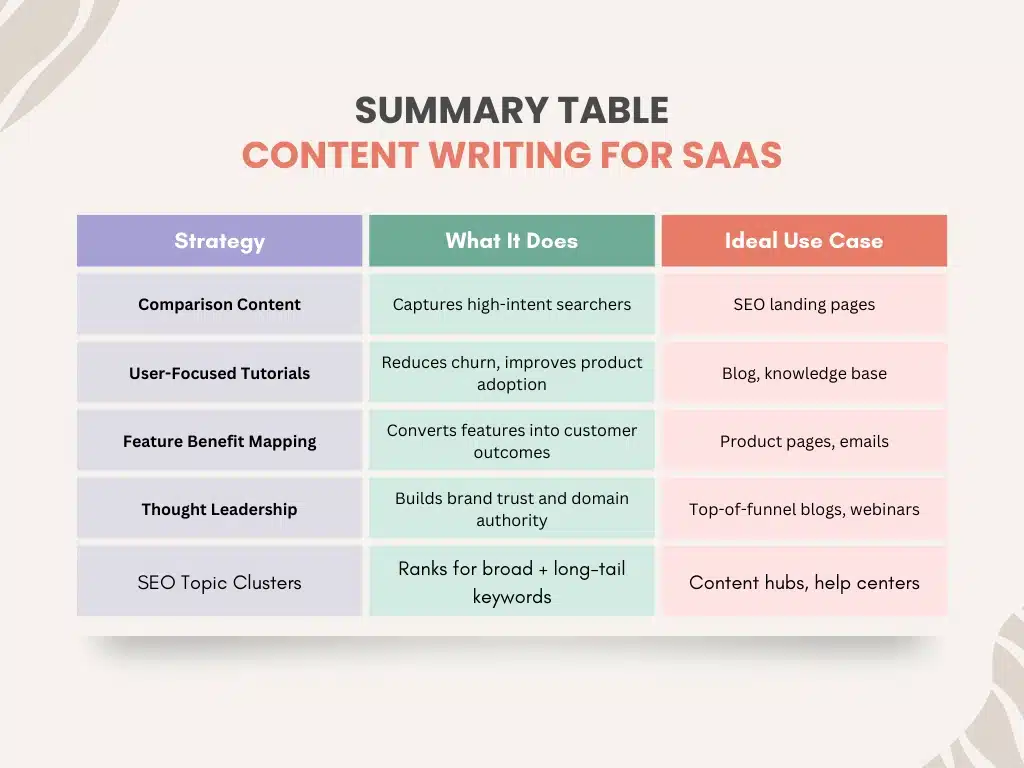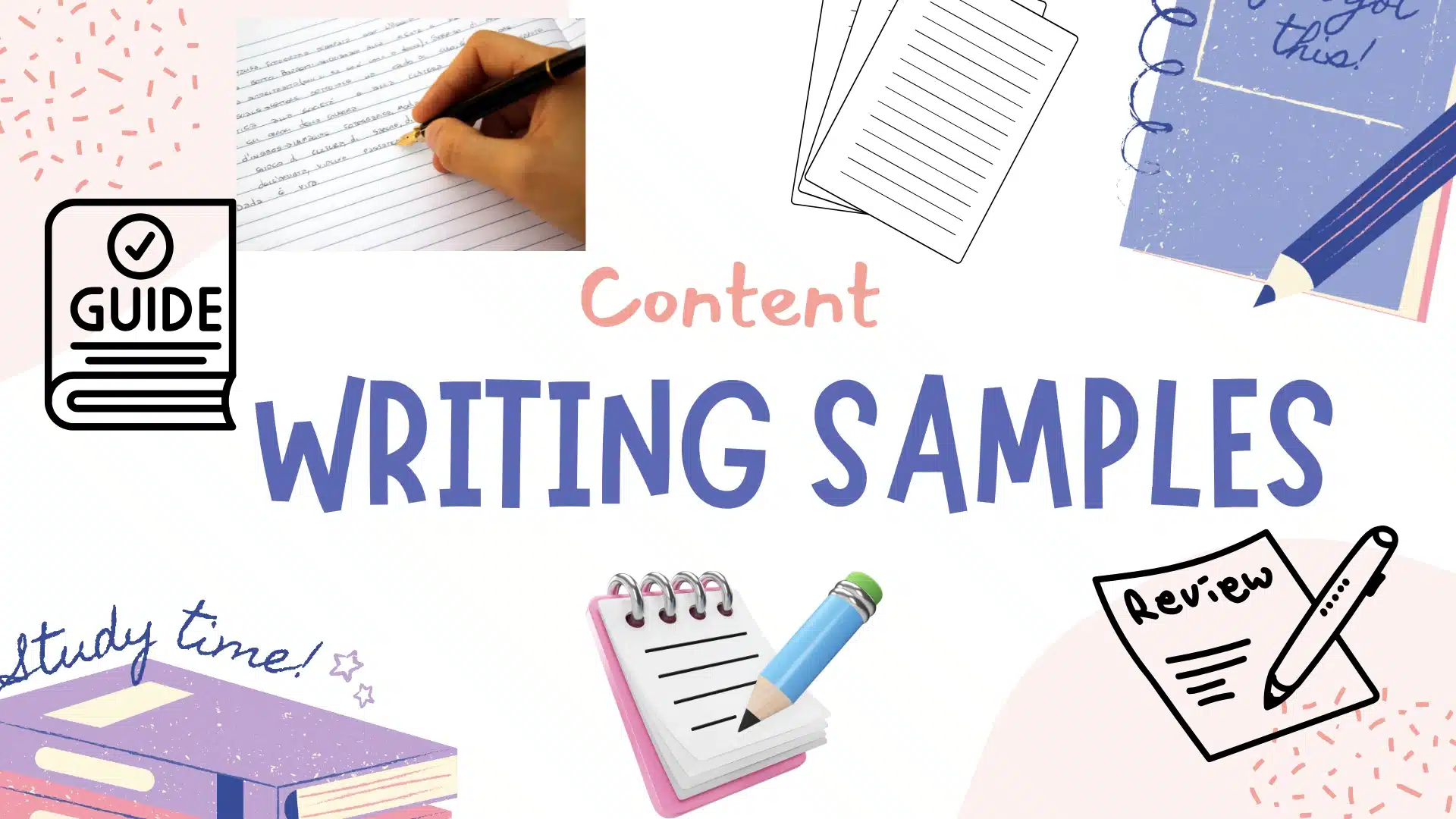Are you struggling to create SaaS content that speaks to your audience and drives sign-ups? SaaS buyers expect clarity, proof, and value—fast. Whether you’re writing for a startup or an enterprise-level product, your content must convert casual browsers into loyal users.
In this guide, you’ll learn how to write SaaS content that educates, builds product trust, and supports user acquisition—leveraging best practices from Hotjar, Ahrefs, CXL, and other leading SaaS voices.
1. What Makes SaaS Content Unique?
SaaS (Software as a Service) content must cater to both technical logic and user-driven benefits. You’re not just selling a product—you’re selling a solution that lives online, evolves continuously, and is often subscription-based.
Key Differences from Other Niches:
| Characteristic | What It Means for Writers | Example |
|---|---|---|
| Product = Experience | You must describe features and UX benefits | Instead of “User management feature,” say “Add or remove team members in seconds.” |
| Recurring Revenue Model | Focus on long-term value, not just first-time sign-ups | “Cut churn by 20% in 3 months with guided onboarding.” |
| Rapid Product Evolution | Content must be frequently updated | Release notes, changelogs, and how-to guides |
SaaS readers are often comparing 3–5 tools side-by-side. Your content must educate, compare, and build confidence in your product.
2. Understand Your SaaS ICPs (Ideal Customer Profiles)
Writing content without a clear ICP is like building a product no one needs. SaaS ICPs vary wildly—from freelancers testing a freemium tool to CIOs implementing enterprise-grade solutions.
Build User Personas Based On:
-
Roles: Founder, marketer, product manager, developer
-
Needs: Automate tasks? Improve collaboration? Get insights?
-
Buying Power: Can they make the purchase decision or just influence it?
For example, Grammarly targets both end users (students, professionals) and enterprise HR managers. Their blog reflects both needs with separate content for grammar tips and content compliance.
🔗 Example: How Grammarly uses content to reach both enterprise and individual users
3. SaaS Messaging That Converts
SaaS users are skeptical. They want answers, not fluff. Your content must:
-
Quickly explain what the tool does
-
Highlight why it’s better
-
Reinforce how it improves their workflow
Messaging Tactics That Work:
-
Pain-First Headlines: “Tired of switching between 5 tools? Here’s 1 that does it all.”
-
Feature → Benefit → Outcome: “Our AI scheduler (feature) finds the best meeting times (benefit), so you save 5+ hours/week (outcome).”
-
Trust Builders: Include real numbers, user quotes, screenshots, integrations, or comparisons.
“Don’t describe features in isolation. Always connect them to a problem and the result.”
— Peep Laja, CXL
4. High-Performing Content Formats for SaaS
Not all content fits every SaaS funnel. Here’s what works best:
| Format | Why It Works | Funnel Stage |
|---|---|---|
| How-to Blogs | Solve specific problems, boost SEO | Top of funnel |
| Comparison Pages | Help users pick your tool over others | Middle of funnel |
| Product Tutorials | Reduce churn and increase activation | Bottom of funnel / Post-signup |
| Webinars & Demos | Build trust and demonstrate functionality | Middle to bottom funnel |
| Case Studies | Showcase ROI with proof | Consideration to decision |
Pro Tip: Use comparison keywords like “[Tool A] vs [Tool B]” to win high-intent traffic.
🔗 See how Notion leverages this tactic
5. SEO + Structure = Visibility + Conversions
SaaS content should educate humans and satisfy algorithms. Here’s how to strike the balance:
Smart SEO Tactics for SaaS:
-
Topic Clusters: Build a core pillar (e.g., “Email Automation”) with related subtopics (“best email automation tools,” “email drip campaign templates,” etc.).
-
Bottom-Funnel Keywords: Target “[tool] alternatives,” “[tool] pricing,” or “[tool] integrations”—these are decision-stage searches.
-
On-Page Optimization: Use internal links, FAQs, schema, and skimmable formatting.
Formatting Tips:
-
Use H2s/H3s, bullets, tables
-
Insert product visuals and GIFs (especially for tutorials)
-
Add CTAs every 500–700 words: “Try free for 14 days,” “Watch the demo,” etc.
6. Content Distribution & Retention Strategy
Creating is only 50% of the job. Promoting and using content to retain users is the other half.
Promote Like a SaaS Marketer:
-
Email onboarding: Embed tutorials, how-to blogs, and changelogs.
-
In-app content: Use tooltips and micro-copy to link users to helpful articles.
-
LinkedIn & Reddit: Target specific SaaS communities and decision-makers.
Don’t Forget Retention Content:
-
Release notes and feature updates (keep them short and user-focused)
-
Customer success stories
-
Webinars and live Q&As
Want to retain users with content? Read Hotjar’s Product Marketing Blog
7. Bonus Checklist: SaaS Content Writing Best Practices
| Task | Why It Matters |
|---|---|
| Speak to pain points + value | Users want to solve a problem, fast |
| Educate, don’t oversell | SaaS buyers do deep research |
| Break down features visually | Screenshots > words |
| Include metrics & results | ROI wins confidence |
| Update regularly | SaaS changes—so should your content |
| Use comparison pages | Convert from competitive searches |
| Distribute across funnel | Onboarding emails, demo pages, help docs, etc. |
Final Thoughts + CTA
Writing for SaaS is more than marketing—it’s about empowering users and showcasing product value at every stage. From onboarding walkthroughs to decision-stage comparison blogs, the right content turns trial users into loyal subscribers.
Ready to scale your SaaS with smarter content?
👉 Let’s write content that converts, educates, and retains. Contact us for content writing services for SaaS today.










